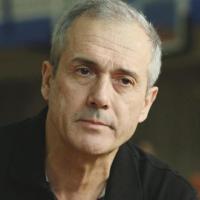 |
Adrian Bejan
Duke University, USA
|
|
Title:
Vascular Design: Freedom, Evolution, Hierarchy
Abstract:
Porous materials are usually thought of as amorphous mixtures of two or more things, solids, fluids, and voids. The research field started that way, and so did my own activity in it. Along the way, I was drawn to the part of nature (the physics) that was missing from the amorphous view: the structure, flow, configuration, drawing (design), purpose, and evolution.
The lecture is pictorial. It begins with defining the terms, because words have meaning: vascular, design, evolution, and prediction (theory). Next, vascular (tree shaped) architectures flow more easily than parallel channels with only one length scale (the wall to wall spacing). Transport across channels is facilitated when the spacing is such that the channel flow length matches the entrance (developing) length of the flow.
The tendency to evolve with freedom toward flow configurations that provide greater access is universal in nature, bio, and non-bio. This tendency is the Constructal Law, which empowers us to predict the evolution toward flow access, miniaturization, high density of heat transfer, and the scaling up (or down) of an existing design.
Vascular designs are icons of the design feature called hierarchy. Vasculatures occur naturally because they flow more easily than one-size designs. The movements in society are hierarchical, from city traffic to global air traffic, fuel consumption, and wealth. The future of evolutionary design everywhere points toward vascular, hierarchical flow architectures that will continue to morph with freedom and directionality.
To read more:
HEAT TRANSFER: Evolution, Design, and Performance, Wiley 2022.
FREEDOM AND EVOLUTION: Hierarchy in Nature, Society and Science, Springer 2020.
CONVECTION HEAT TRANSFER, 4th ed, Wiley, 2013.
Bio:
Adrian Bejan was awarded the 2018 Benjamin Franklin Medal for "his pioneering interdisciplinary contributions in thermodynamics…and constructal theory, which predicts natural design and its evolution in engineering, scientific, and social systems."
He earned all his degrees from the Massachusetts Institute of Technology: B.S. (1971, Honors Course), M.S. (1972, Honors Course) and Ph.D. (1975). He is the J.A. Jones Distinguished Professor at Duke University.
Prof. Bejan’s research is in applied physics, thermodynamics, theoretical biology, and design and evolution everywhere in nature, bio, and non-bio. He created original methods of theory, modeling, analysis, and design: entropy generation minimization, scale analysis, intersection of asymptotes, heatlines, constructal law, vascular and evolutionary design.
He is the author of 30 books and 700 peer-refereed journal articles. Google Scholar: h = 106, total citations 84,000. According to the 2019 ‘citations impact’ world rankings, he is 9th among all Engineering authors in the world, all disciplines. He is honorary member of the ASME and member of Academia Europaea.
|
| |
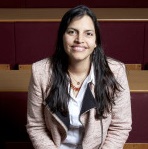 |
Adriana Paluszny
Imperial College London, UK
|
|
Title:
Watson Forum: A career in (porous media) modelling
Abstract:
This talk will discuss the Watson Forum Project, a series of informal interviews that seek to highlight the contributions of women in STEM. The mission of the 3-4 min videos is to inspire individuals to pursue lasting careers in the context of maths, physics, earth sciences, and engineering, and aims to project accessible women-in-science role models to the world.
The Watson Forum was developed in 2016 to foster a sense of community among women in the fields of numerical modelling, simulation, and programming, and create a sparse but permanent and accessible record of the women who work in this area. Many of the women interviewed for the Watson Forum are from the fields of earth sciences and porous media, and interviewees often have hybrid careers that combine numerical and analytical modelling with other activities, such as experimental and field work.
Those who participate as interviewees become a part of it, which develops the community among the growing number of featured role models. This talk will describe the project (https://www.youtube.com/c/modellingcareers), and its reach, as well as the motivations that led to its development, and the impact that it has had.
Bio:
Adriana Paluszny is a Senior Lecturer and Royal Society University Research Fellow at Imperial College. She conducts research in the development of numerical methods for the multi-physical simulation of subsurface systems. Her research focuses on the robust three-dimensional numerical modelling of nucleation, growth, and interaction of multiple discontinuities, with applications to the geomechanical modelling of fluid injection, the permeability of fractured rock masses, and emerging methods in computational mechanics. Adriana is an Associate Editor of the Journal of Geophysical Research: Solid Earth, a member of the Editorial Board of the International Journal of Rock Mechanics and Mining Sciences, and a Member of the Poromechanics Committee of the Engineering Mechanics Institute of the American Society of Civil Engineers. She was awarded the 2019 Editors’ Citation for Excellence in Refereeing for JGR: Solid Earth.
Dr. Paluszny applies first principles coupled numerical methods to model fractured media and permeability changes in the context of geological storage of hydrogen, geothermal energy, as well as carbon storage (CCS), and compressed air energy storage. She is the PI of the SeisGreen project: a large multi-institutional project that seeks to de-risk induced seismicity in the context of large-scale green energy technologies (https://www.imperial.ac.uk/earth-science/research/seisgreen/).
In 2018, she received the international “Chin-Fu Tsang Coupled Processes Award” for young scientists. She is a Royal Society University Research Fellow (URF). Adriana is the lead developer and architect of the Imperial College Geomechanics Toolkit, a numerical modelling tool for fracture growth and subsurface processes.
Dr. Paluszny also leads the Watson Forum outreach project. A grain of sand to raise awareness of STEM careers, aimed at motivating women to embark in scientific modelling careers.
The Watson Forum YouTube channel can be found here:
https://www.youtube.com/ModellingCareers
The description of the Project is here:
https://www.imperial.ac.uk/engineering/departments/earth-science/news-events/outreach/watson-forum/
|
| |
|
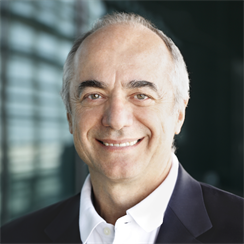 |
J. Carlos Santamarina
King Abdullah University of Science and Technology, Saudi Arabia
|
|
Title:
Multi-Physics Repetitive Loads
Abstract:
Most natural and engineered systems experience repetitive loading cycles of all kinds, including: stress (our bones and foundations), fluid pressure (the beating of our hearts, tidal action, and pumped hydro storage), suction (our lungs and natural dry-wet cycles), pore fluid chemistry (salt-water intrusion), and thermal cycles (such as silos, freeze-thaw, and geothermal systems). Repetitive loads can cause significant accumulations of volumetric strain (towards the terminal void ratio) and plastic shear strains (shakedown or ratcheting), lead to accelerated transport (of heat, chemical species and particles), and alter material properties and system performance. Complementary multi-scale experiments and simulations provide unique insights into the underlying mechanisms that explain the observed responses. Analysis and design must consider the influence of multi-physics repetitive loads on the long-term performance, serviceability and safety of engineered systems. Asymptotic trends can be used to obtain first-order estimates for simple boundary conditions; however, complex boundary conditions require numerical simulations, the development of new constitutive models and the implementation of hybrid algorithms that avoid standard time-stepping numerical protocols.
Bio:
J. Carlos Santamarina's research focuses on the fundamental study of geomaterials and subsurface coupled processes at multiple scales. The implementation of this research has involved the development and utilization of multi-scale experimental methods, high-resolution process monitoring, forward modeling and inverse problem solving. Using this theoretical and experimental research framework, Santamarina and coworkers explore critical problems in energy geoengineering, with emphasis on oil and gas, and the geological storage of CO2 and nuclear waste. The team has co-authored two books and more than 400 articles which summarize salient concepts and research results. Santamarina is a corresponding member of the Argentinean National Academy of Sciences and the National Academy of Engineering. He holds a Ph.D. from Purdue University, M.S. from the University of Maryland, and B.Sc. from Universidad de Cordoba.
|
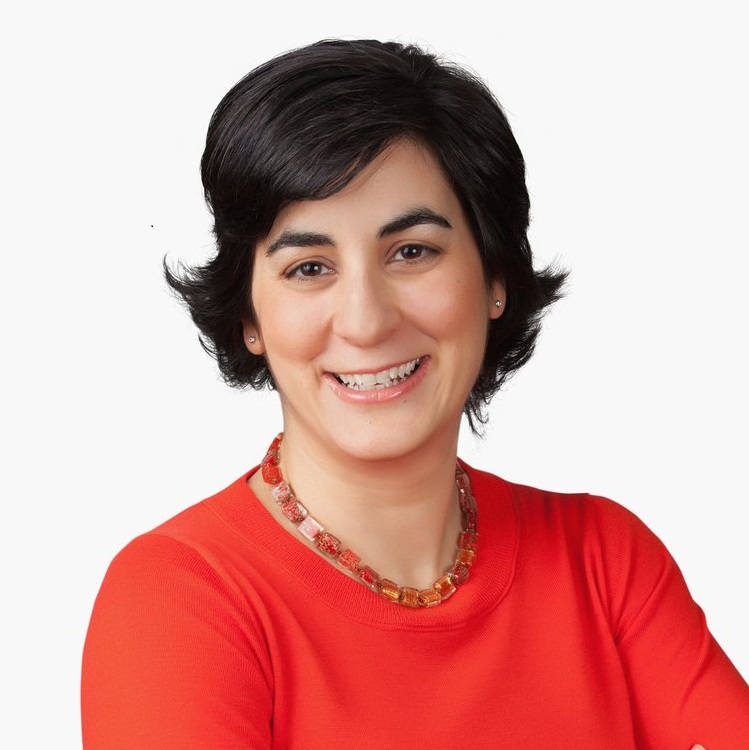 |
Nathalie Tufenkji
McGill University, Canada
|
|
Title:
Porous Graphene Oxide Macrostructures for Water Treatment Applications
Abstract:
Providing clean, safe water reliably in an affordable manner is a major global challenge. A wide variety of water pollutants, including heavy metals, dyes, pesticides, and pharmaceutical compounds pose a threat to public and environmental health. Existing water treatment technologies do not adequately meet water quality standards for removal of the diverse range of contaminants; thus, technological innovation is needed to enhance water security and accessibility. Engineered nanomaterials, such as graphene oxide (GO), offer tunable multifunctionality for effective removal of a diverse range of contaminants from water. However, the practical implementation of nanomaterials such as GO in water treatment requires their immobilization into three-dimensional macrostructures which may impair their performance. Unlike colloidal nanomaterials, solid macrostructures of GO can be easily stored, transported and manipulated. Despite the progress on forming high surface area and multifunctional GO macrostructures, synthesizing mechanically robust porous macrostructures, especially for wet applications, is a challenge. This talk will describe approaches for the preparation of GO-based macrostructures that can be used in water treatment. The functionalization of macrostructures of engineered nanomaterials with antimicrobials for prevention of biofouling or removal of pathogens from contaminated waters will also be discussed.
Bio:
Nathalie Tufenkji is a Professor in the Department of Chemical Engineering at McGill University where she holds the Tier I Canada Research Chair in Biocolloids and Surfaces. She works in the area of particle-surface interactions with applications in protection of water resources, plastic pollution as well as the discovery of natural antimicrobials. Professor Tufenkji was awarded the Killam Research Fellowship, the Engineers Canada Award for the Support of Women in the Engineering Profession, the Chemical Institute of Canada Environment Award, the YWCA Woman of Distinction Award in Science and Technology, and the Hatch Innovation Award of the Canadian Society for Chemical Engineers. She was elected to the College of New Scholars, Artists and Scientists of the Royal Society of Canada in 2016 and the Canadian Academy of Engineering in 2020. Professor Tufenkji also serves as Associate Director of the Brace Center for Water Resources Management at McGill and has co-chaired several major international conferences. She has also served on the editorial advisory boards of the journals Environmental Science and Technology, npj Clean Water, Water Research, Colloids and Surfaces B, Advances in Colloid and Interface Science, and Environmental Science: Nano.
|
|
|
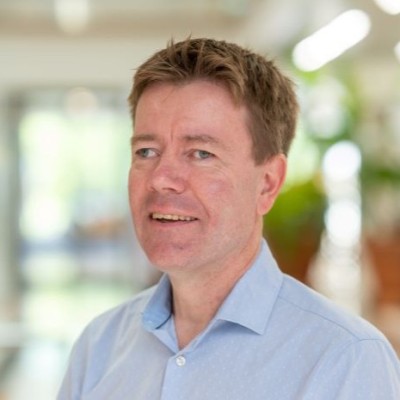 |
Onno van Kessel
Shell, The Netherlands
|
|
Title:
Energy transition and porous media; an industrial megaproject perspective
Abstract:
The Intergovernmental Panel on Climate Change has made clear that the world needs to undertake rapid and deep transitions in each of the areas that contribute to global greenhouse gas emissions: power, transport, buildings, agriculture and industries like steel, chemicals and cement. To meet the world’s energy needs while decarbonising will require accelerating electrification of the economy through renewable power and will also still require the use of liquid and gaseous fuels in sectors that are hard to electrify; at the same time, these fuels will steadily transition from traditional fossil fuels to low- and no-carbon sources as end-use technologies evolve.
Such energy transitions are inevitable over time, but they are and will be proceeding at different paces in different places and in different sectors. Shell’s Energy Security and Energy Transformation scenarios identify different national response archetypes and explore how the world energy system could possibly evolve under different sets of assumptions and what the consequences would be for the sources and sinks of anthropogenic carbon (as CO2) in 2050.
Even among the most difficult-to-decarbonise sectors, decarbonisation is already technically feasible. Yet many current options still face significant compromises preventing them to be the ubiquitous, low-cost backbone of the future energy system. New technologies hence play a crucial role because of their potential to accelerate the energy transition. Hydrogen technology, E-mobility, offshore wind, different forms of carbon capture, renewable and sustainable fuels as well as energy system integration and digital technologies dealing with decentralization – all are major innovation areas in their own right. Viewed through the lens of porous media research at InterPore2023, however, it is advanced energy storage and CO2 storage which emerge as the areas of greatest interest. For CO2 storage specifically, geomechanical and thermal modelling as well as monitoring and verification technology are currently seeing major innovation.
When deciding which promising technologies to further develop, demonstrate and deploy, we cannot look at fundamental technical credentials alone. The industrial, geographic and time scales of the energy transition compel us to ask essential questions other than ‘is it technically better?’ Examples of such questions are: can it be transported? Can it be scaled up 100x or 1000x? Is it resource efficient and circular? Will it acquire all necessary project permits? What will local residents and end-users think? What are the remaining risks and who will bear them? What policy support does it require? In other words: what will it take to turn promising technology into the range of large projects that will ultimately deliver the energy transition at the scale and speed required? Building on experience of industrial-scale energy project development – and using some examples based on integrated carbon capture, transport and storage projects – I will highlight the type of scrutiny and constraints (people, space, materials, equipment, schedule, policies, standards, environmental impact etc.) that typically apply once technology is taken out of the R&D space into the front-end development and execution of megaprojects.
Bio:
Onno van Kessel is the General Manager for CCS Development & Subsurface, responsible for the global technical delivery and competitiveness of Shell's pre-FEED CCS project portfolio, as well as Development & Subsurface capability for CCS and support to operated CCS assets.
After graduating with a MSc in Applied Physics from Eindhoven University of Technology (Netherlands), Onno joined Shell in 1991 as a wellsite petroleum engineer in the southern North Sea. Following petroleum engineering assignments in Aberdeen (UK) and in Brunei, he joined Shell’s Gas & Power division in 2001 with responsibility for the governance of midstream gas assets in Europe.
He then moved to Perth (Australia), where he became head of supply planning and economics for the Woodside-operated North West Shelf LNG and domestic gas project. He returned to The Hague in 2008 to lead Shell’s European gas strategy and market fundamentals team in the Upstream International division.
In 2012 he took up a position as senior business development manager for global deployment of Shell’s Gas To Liquids (GTL) technology and in 2014 he became responsible for leading the Mozambique GTL and Power project through its initial development phases. In 2018 he was appointed as VP Programs & Innovation in Integrated Gas Development, followed by his current appointment in 2021.
|
| |
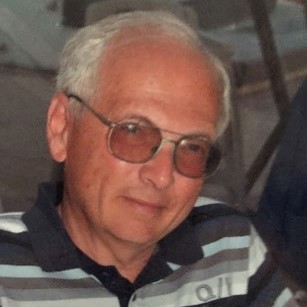 |
Eugene Vorobiev
Université de Technologie de Compiègne, France
|
|
Title:
Electroporation of cellular membranes for the enhancement of mass transfer in biological media: mechanism and technological applications
Abstract:
Cellular membranes serve as selective barriers for regulation of molecular transport between interior and exterior of cells. Under the effect of electric field pulses of very short duration (from several hundred of nanoseconds to several milliseconds) with pulse amplitude from 100-300 V/cm to 100-300 kV/cm, the biological membrane is electrically pierced and loses its semi-permeability temporarily or permanently. The electrical permeabilization of biological membranes (called electroporation) may be reversible or irreversible. It was shown that electroporation can serve to introduce into cells or extract from cells small and/or large molecules. This phenomenon has been applied to amplify the insertion of nucleic acid molecules in genetic modifications, to enhance drug transport in cancer treatment or for the killing of microorganisms. Electroporation can also be used to enhance extraction of valuable cell compounds (polyphenols, carbohydrates, proteins,..) from biological media (plant tissue and biomass materials). Biological tissue with electroporated cell membranes, but with a preserved cell wall network, is selectively permeable. For the purpose of mass transport, electroporated cell tissue presents a porous network with improved permeability and diffusivity characteristics.
This lecture presents the mechanisms of cell electroporation, its impact on the physical properties of biological media, and gives examples of mass transfer enhancement in electroporated cell network. Different methods to detect and quantify electroporation phenomena in porous network of biological tissue are presented. Impacts of electroporation on the mechanical, diffusional and electrophysical properties of biological media are illustrated by numerous examples. Physical models of liquid expression and compounds diffusion in compressible electroporated biological tissue are presented. Several innovative green technologies based on the pulsed electric energy induced electroporation are presented, including selective extraction, filtration, pressing, and drying of plant materials and biomass.
Bio:
Eugene Vorobiev is a Professor Emeritus at the Compiegne University of Technology (UTC), France. He was a full Professor of Chemical Engineering and a head of the Laboratory for Agro-Industrial Technologies of UTC from 1997 to 2021. He received his engineer diploma (1975) and PhD degree (1980) from the Kiev Technological University (Ukraine), and his Dr Habil. diploma (1997) from the Université de Technologies de Compiegne, France. His main research interests are focused on the solid-liquid extraction, filtration, expression, and electrically assisted separations. His team provided pioneering research on pulsed electric energy enhanced processing and technologies. He has published more than 400 scientific peer-reviewed papers, he is the author of 19 patents, 6 books and more than 40 book chapters. His Google Scholar h-index: 83. He is a member of editorial board in several international journals (Separation and Purification Technology, Innovative Food Science and Emerging Technologies, Food Engineering Reviews, Agricultural and Food Chemistry). He was awarded by Gold Medal of the Filtration Society and he was twice a Laureate of Price of the French Agency for Ecological Transition ADEME.
|













